Physical Address
304 North Cardinal St.
Dorchester Center, MA 02124
Physical Address
304 North Cardinal St.
Dorchester Center, MA 02124
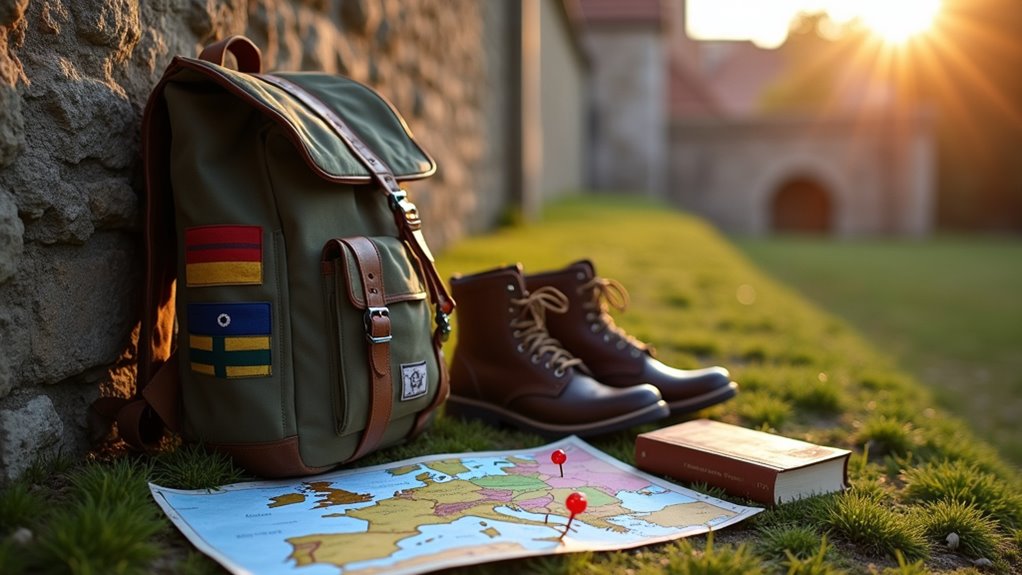
Journey through Europe's wild camping maze where one wrong tent pitch could cost you hundreds—discover which countries welcome free spirits and which don't.
Like the intrepid Arthur Dent thrust into cosmic adventure, you’re about to discover that camping across Europe doesn’t require a towel—but it does demand smart planning. You’ll navigate a patchwork of wild camping laws that vary dramatically from Norway’s “right to roam” to Germany’s strict prohibitions. The difference between a €5 night under Nordic stars and a hefty fine in a Swiss meadow often comes down to knowing which invisible lines you’re crossing and when local rangers patrol.
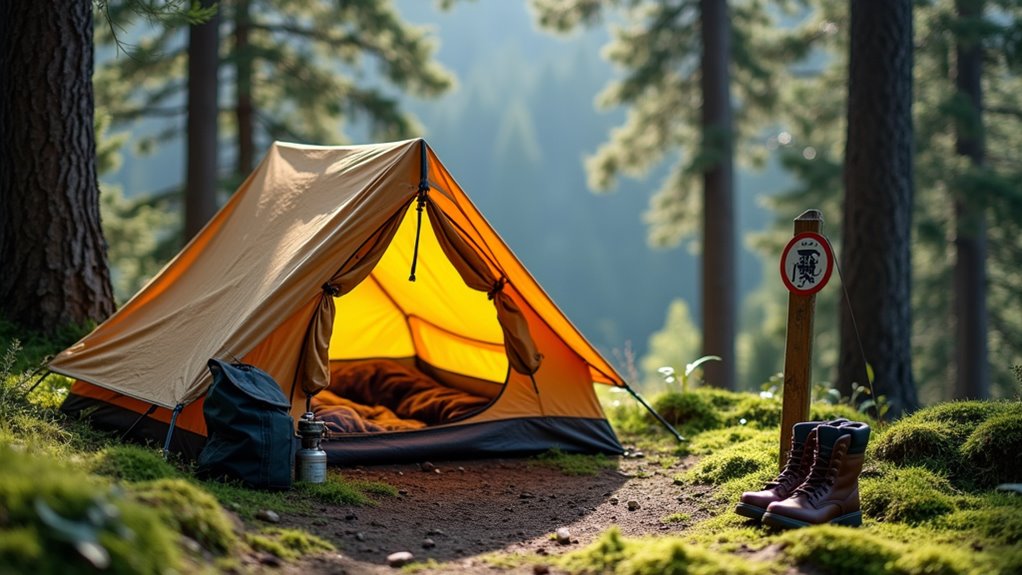
Before you pitch your tent anywhere in Europe, you’ll need to understand that camping laws vary dramatically from country to country—and sometimes even between regions within the same nation.
Wild camping’s completely legal in Scotland and Norway, but you’ll face hefty fines in Germany or Switzerland if caught sleeping rough without permission.
Know before you go—what’s perfectly legal in Scotland could land you with expensive fines just across the border in Germany.
Here’s your reality check: most Western European countries restrict wild camping to designated areas or require landowner consent.
Eastern Europe tends to be more relaxed, though enforcement varies wildly.
Countries like France allow bivouacking above certain altitudes, while others prohibit it entirely.
Always research specific regulations before you travel.
Download offline maps marking legal camping zones, and don’t assume tourist information applies to budget travelers—ask locals about enforcement patterns.
Remember that responsible camping practices not only help you avoid legal issues but also preserve the natural environments that make Europe’s outdoor spaces so spectacular for future travelers.
Once you’ve mapped out where you can legally camp across Europe, you’ll need gear that works in multiple climates and countries without breaking your budget. Invest in a three-season tent that handles Mediterranean heat and Alpine cold. Your sleeping bag should be rated for 32°F – it’ll keep you warm in Scandinavia while staying lightweight.
Pack a compact stove that accepts multiple fuel types, since cartridge availability varies by country. You’ll find Jetboil canisters everywhere, but liquid fuel offers better cold-weather performance.
Choose a 40-50L backpack for hiking flexibility. Include a portable power bank, universal plug adapter, and quick-dry clothing. Skip cotton entirely – merino wool and synthetic fabrics dry faster and smell less. In certain regions of Europe, particularly areas with standing water or wetlands, mosquito nets become essential protection against disease-carrying insects. These essentials adapt to Europe’s diverse conditions without weighing you down.
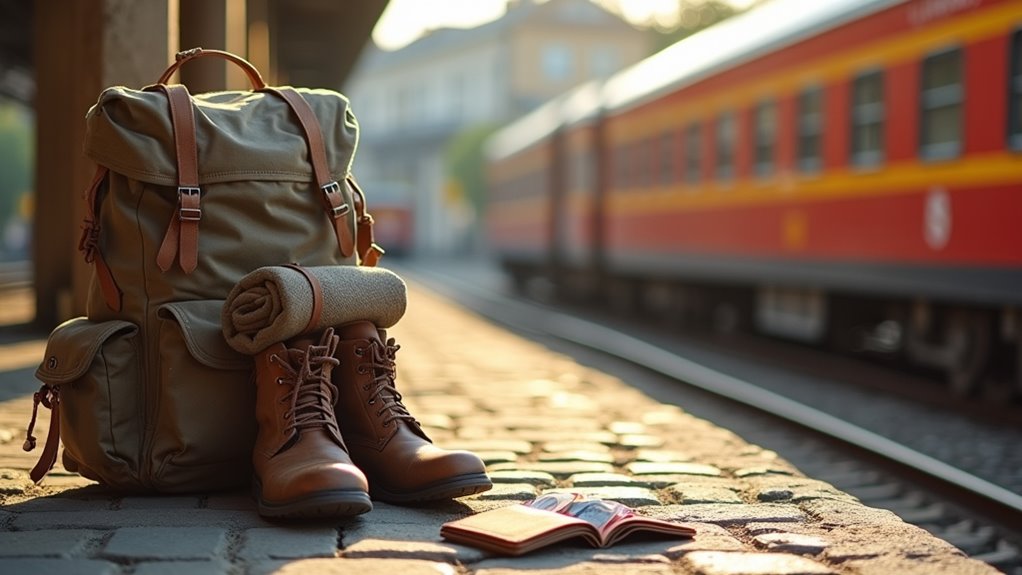
While flights between European capitals might seem convenient, ground transportation offers far better value for camping adventures. You’ll save money while experiencing the continent’s diverse landscapes firsthand.
Your best budget options include:
Consider renting a car if you’re traveling with multiple people or planning extended stays in rural areas.
Factor in fuel, tolls, and parking when calculating costs. Budget airlines work for long distances, but remember baggage fees can quickly eliminate savings when you’re hauling camping equipment.
Although mainstream campgrounds offer convenience, Europe’s most memorable camping experiences happen at secluded spots you won’t find on booking sites. You’ll discover these gems by talking to locals in small towns, checking community boards in hostels, and following hiking trails that lead away from tourist clusters.
Download apps like iOverlander and Park4Night – fellow travelers share GPS coordinates of free camping spots, hidden beaches, and farmer’s fields where you can pitch your tent. Look for forestry roads, abandoned quarries, and lakeshores marked “wild camping permitted.”
Ask farmers directly if you can camp on their land – many Europeans welcome respectful travelers for a small fee. Mountain huts often allow tent camping nearby for minimal cost.
Scout locations during daylight, respect local regulations, and always leave no trace. When camping in remote locations, consider bringing camping showers to maintain hygiene when traditional facilities aren’t available.
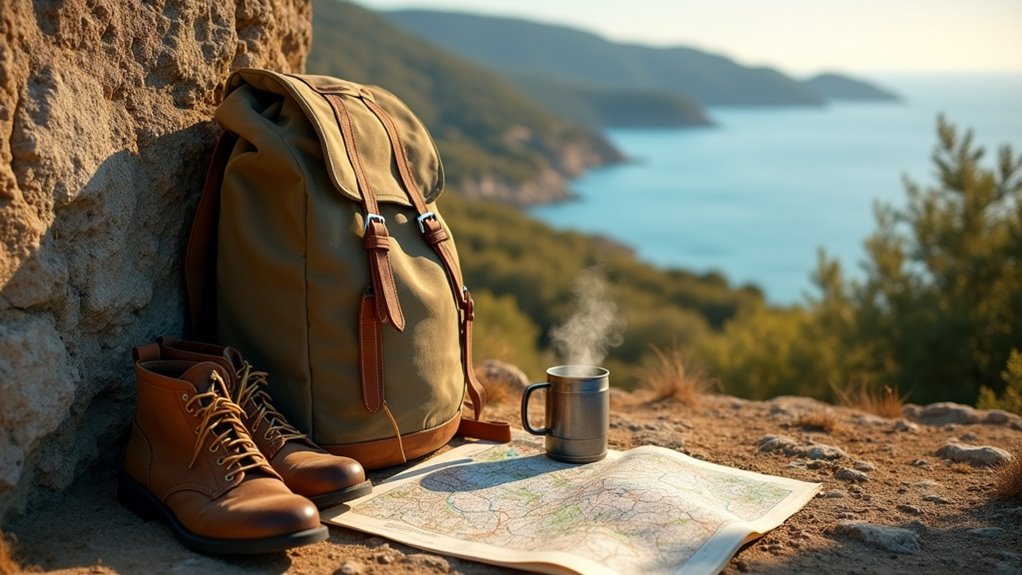
Europe’s diverse landscapes create distinct camping experiences that’ll match whatever adventure you’re craving. Each region offers unique opportunities without breaking your budget.
Nordic Region delivers dramatic fjords and midnight sun during summer months. You’ll find affordable wild camping rights in Norway and Sweden, plus countless free spots along coastal routes.
Central Alps provide mountain adventures with well-equipped campsites. Look for municipal campgrounds that cost half the price of private ones, especially in Austria and Switzerland’s valleys.
Mediterranean Coast offers year-round camping with beach access. Spain and Portugal feature budget-friendly coastal campsites, while Croatia’s islands provide stunning waterfront spots.
Winter camping across Europe’s northern regions requires specialized essential gear to handle extreme cold and unpredictable weather conditions.
Since wilderness emergencies can happen anywhere from Scottish highlands to Romanian forests, preparing properly becomes your cheapest insurance policy. You’ll need essentials that won’t break your budget: download offline maps before losing signal, pack a basic first-aid kit with bandages and pain relievers, and carry a whistle for emergencies.
Wilderness emergencies strike everywhere—from Scottish peaks to Romanian woodlands—making proper preparation your most affordable life insurance.
Weather changes fast in European mountains, so layer clothing and waterproof everything important.
Always tell someone your planned route and return date. European emergency number 112 works across all EU countries, even without cell service. Pack extra food and water than you think you’ll need – getting lost happens to experienced hikers too.
Finally, know your limits and turn back when conditions worsen. Pride costs more than postponing adventures. Before setting up camp, scout for an ideal camping spot that’s level, protected from wind, and away from potential hazards like dead trees or flood zones.
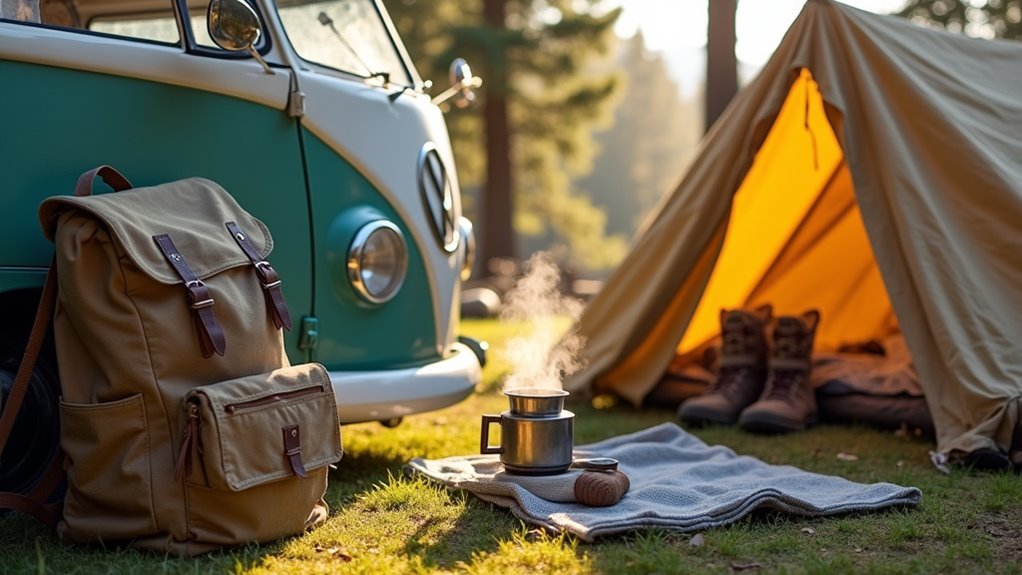
When you’re sharing space with fellow campers across Europe, understanding local customs saves you from awkward situations and helps stretch your travel budget.
Each country has unique camping etiquette that’ll make your experience smoother. Germans value quiet hours religiously—no loud conversations after 10 PM. Scandinavians expect you to clean communal areas meticulously after use. French campers often share meals and appreciate when you bring local wine to contribute.
Here’s what you should always remember:
You’ll find that small gestures of cultural awareness often lead to helpful tips about free attractions and budget-friendly local spots. Following proper camping etiquette helps create a positive atmosphere for everyone at the campsite and ensures you’ll be welcomed back by both management and fellow travelers.
Although Europe’s climate varies dramatically from Mediterranean warmth to Arctic conditions, you’ll save hundreds on accommodation by camping year-round if you plan strategically.
Spring offers mild temperatures and fewer crowds, but pack waterproof gear for unpredictable showers.
Spring camping delivers comfortable weather and peaceful sites, though sudden rain makes waterproof equipment essential for any European adventure.
Summer brings peak camping season with long daylight hours, though you’ll pay premium prices and fight for spots at popular sites.
Autumn delivers stunning scenery and moderate weather, but some facilities close after September.
Winter camping requires serious preparation—invest in four-season gear and research which campsites stay open.
Nordic countries embrace winter camping culture, while Mediterranean regions offer surprisingly pleasant cold-season conditions.
Check local weather patterns before departure, pack layered clothing, and always have backup indoor accommodation contacts for severe weather emergencies.
Remember that planning ahead with a detailed checklist ensures you’ll have all the essential camping gear needed for a comfortable and memorable outdoor adventure.

While paper maps and guidebooks still have their place, your smartphone can transform into the ultimate camping companion with the right apps—and most won’t cost you a penny.
Start with offline mapping apps like Maps.me or OsmAnd, which download detailed European maps directly to your device. You’ll navigate backcountry trails without burning through data or losing signal in remote areas.
Essential categories to download include:
For serious weather tracking, consider downloading a dedicated weather forecast watch app that displays detailed upcoming conditions beyond basic temperature readings.
These digital tools streamline logistics, save money on guidebooks, and connect you with fellow travelers’ real-time recommendations.
You’ve got everything you need to tackle Europe’s camping scene like a seasoned explorer with a well-worn map. From Norway’s midnight sun to Greece’s olive groves, you’re ready to pitch your tent anywhere the continent calls. Remember, respect local customs, pack smart, and don’t let tight budgets hold you back. Europe’s wilderness is waiting, and with these tools in your backpack, you’ll create adventures that’ll last a lifetime.